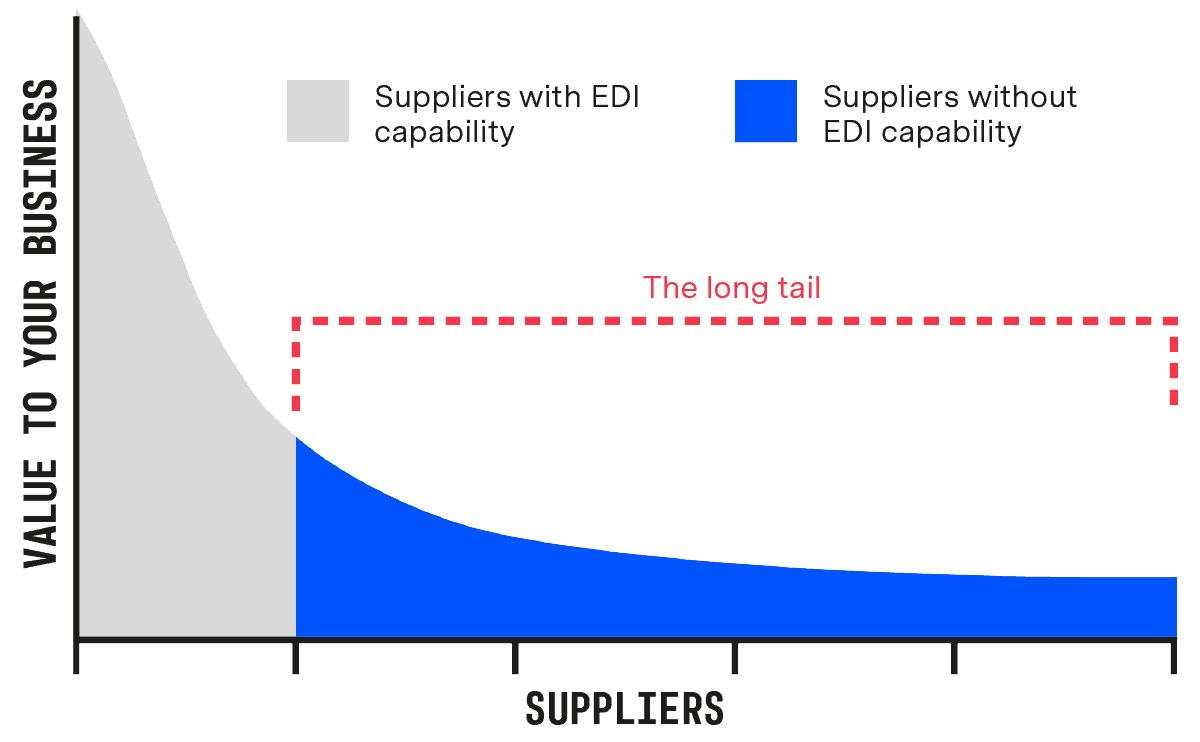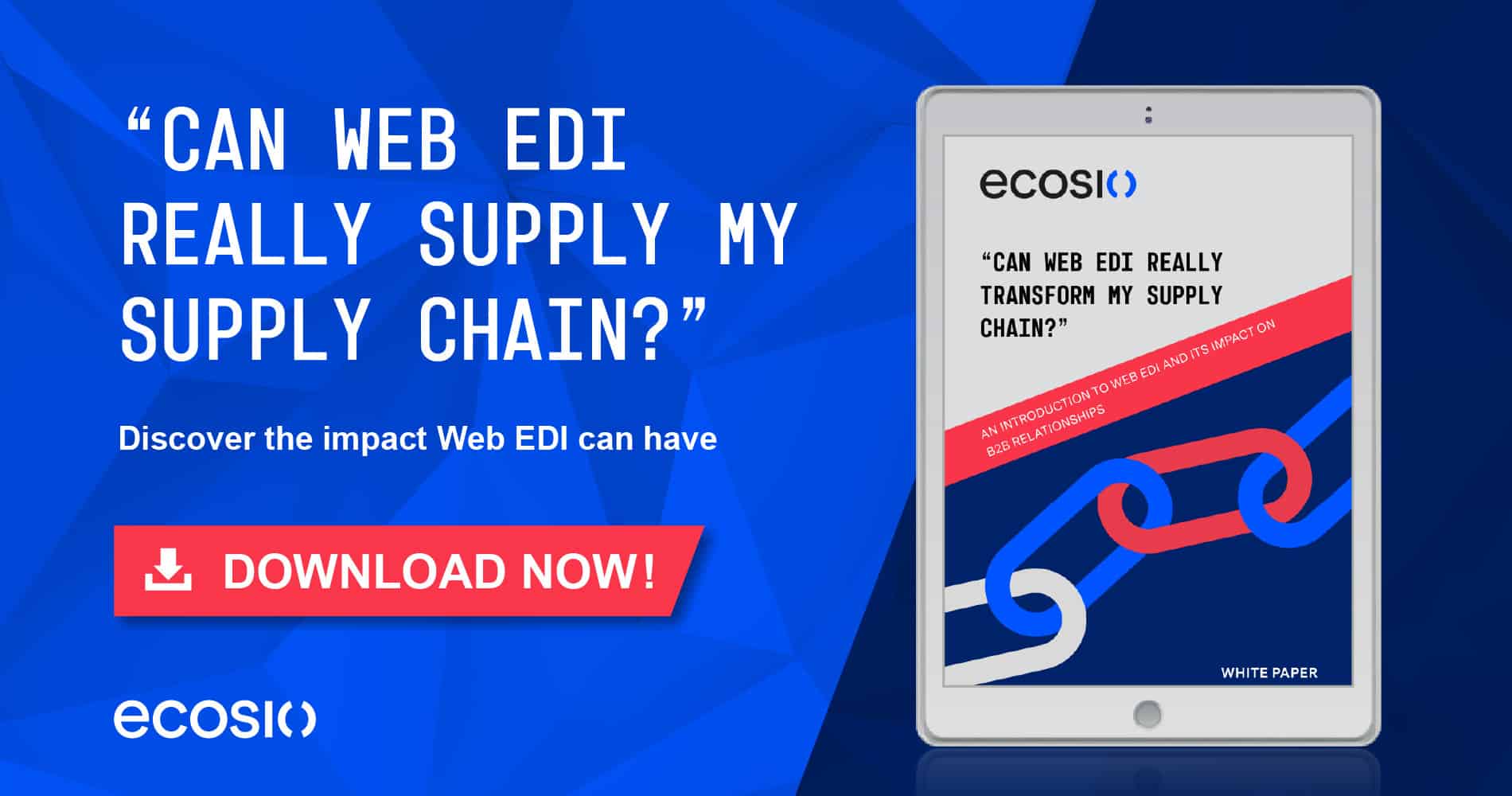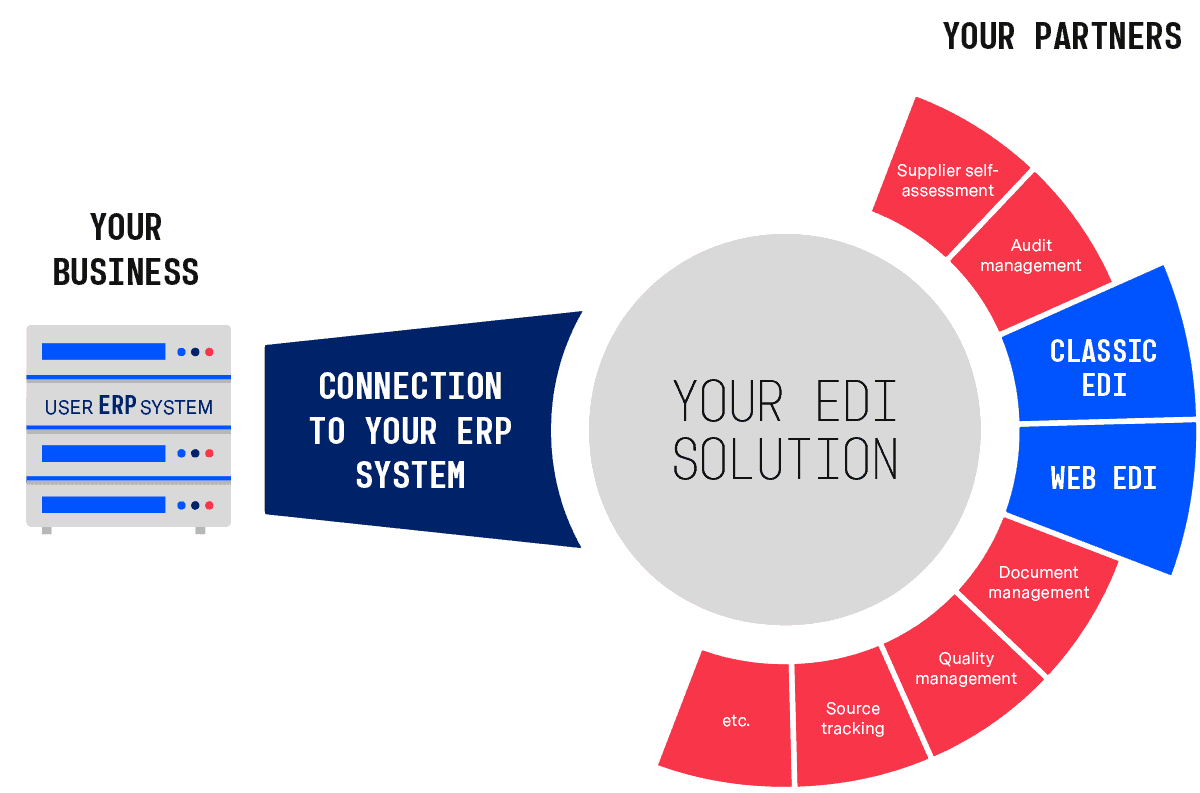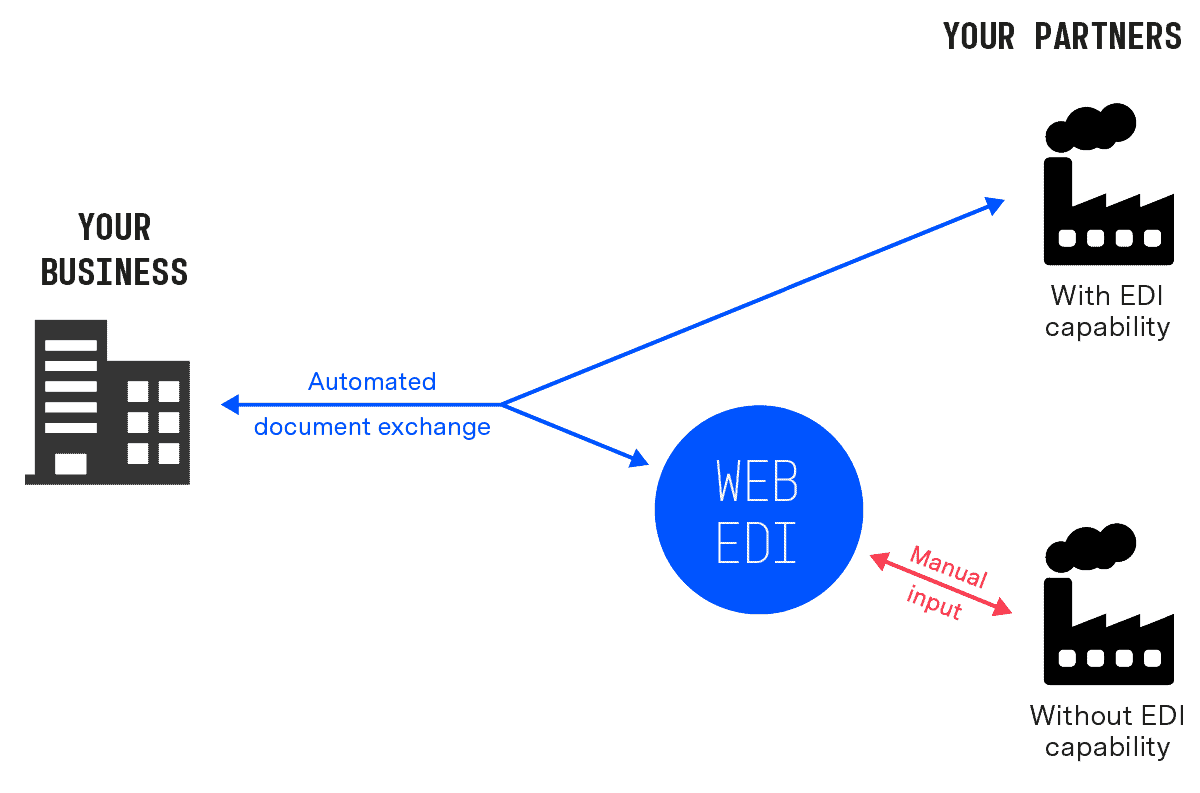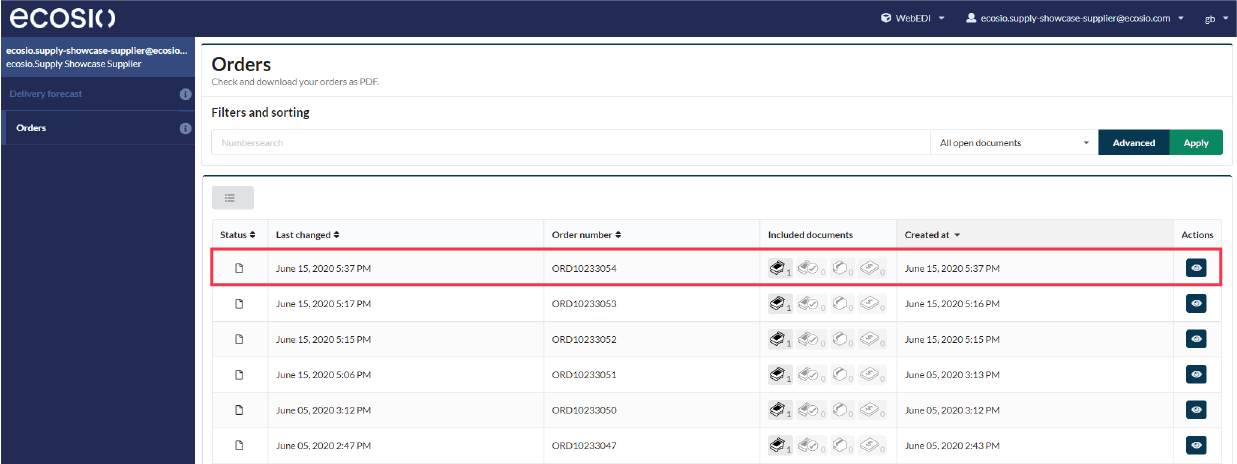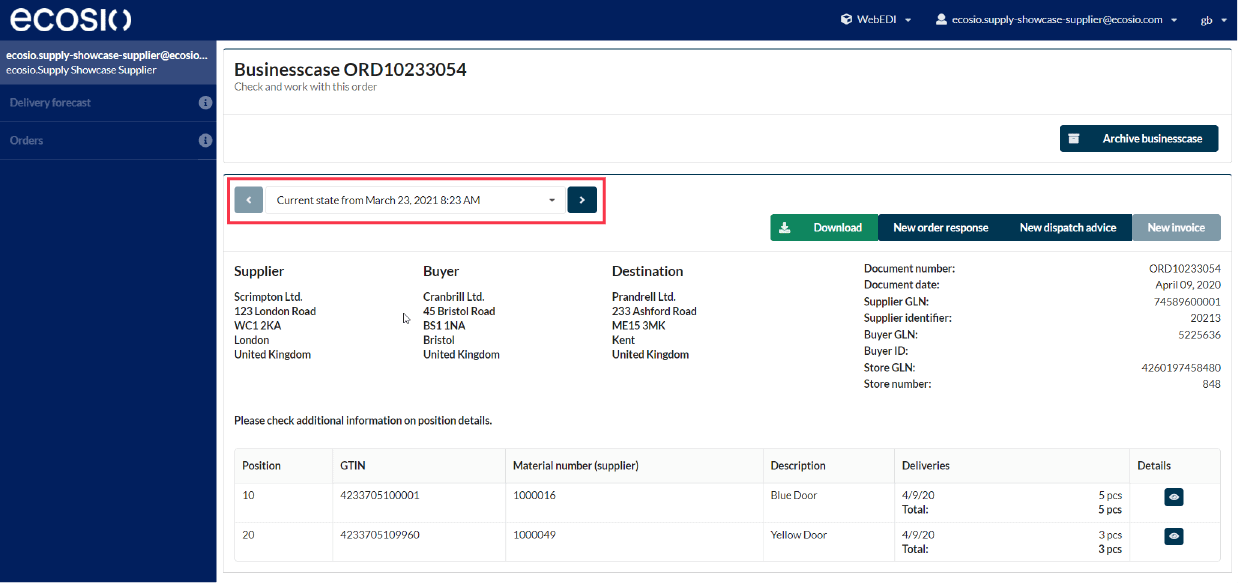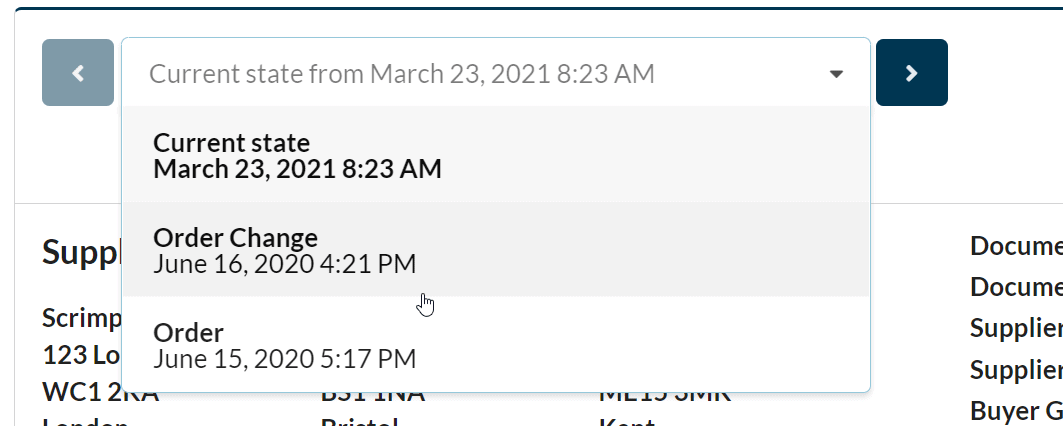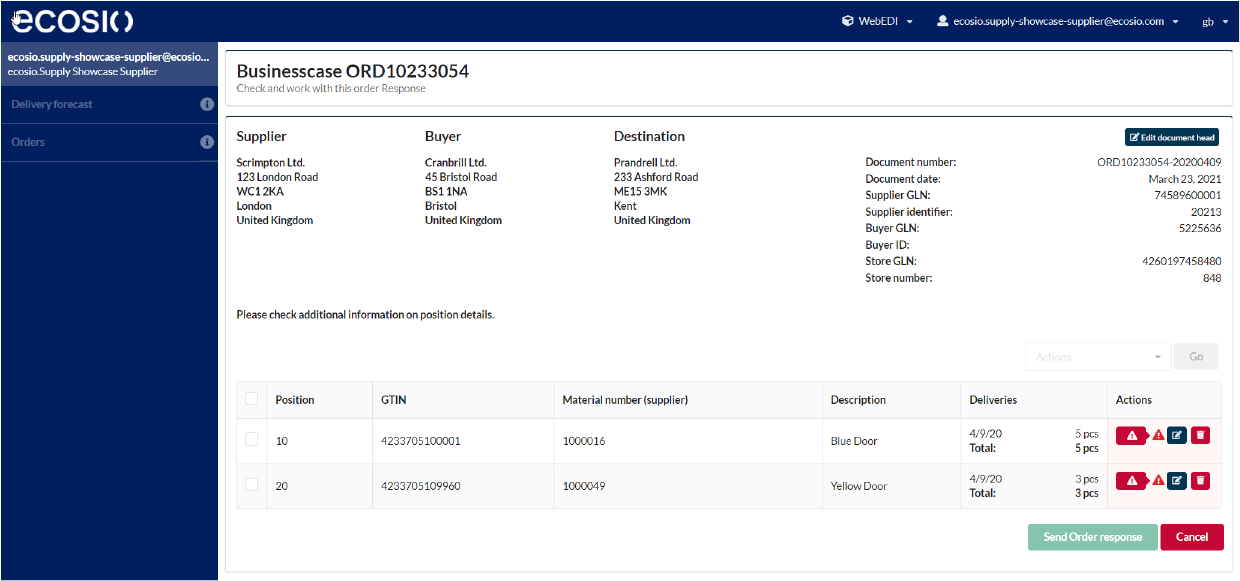For any supply chain business serious about streamlining B2B processes and reducing costs, a Web EDI system is a hugely important tool. By enabling those of your suppliers that lack EDI capability to receive, read, create and transmit structured electronic messages via a simple web portal, a good Web EDI solution can transform your business, allowing you to achieve automation across much more of your partner network.
To help you understand exactly what Web EDI offers, in this article we’ll run through the basics of how Web EDI works and examine the steps involved in a typical interaction with a Web EDI portal (from the perspective of your suppliers) – namely receiving a purchase order and purchase order changes and returning the relevant documents. First, though, let’s clarify what Web EDI is exactly…
What is Web EDI?
As we explain in our video on this topic, Web EDI is a tool for connecting to suppliers that lack the infrastructure to conduct EDI in the traditional manner. In addition to enabling your suppliers to decrypt your EDI messages to them, it allows partners to add data relating to orders and invoices etc., converts them into structured electronic messages, and transmits them directly into your ERP system.
This way businesses are able to extend automation across as much of their supply chain as possible. For your partners it allows simple transmission of EDI documents via a web portal. Meanwhile deep integration with your ERP system ensures that, for you, message exchange via Web EDI looks no different to that via classic EDI.
Your benefits
- A more streamlined partner network
- Cost and time savings through increased automation
- Less pressure on in-house teams
- ecosio also offers 24/7 platform monitoring and provides updates free of charge
Supplier benefits
- Access to real-time purchase order information and purchase order changes (in good systems all order changes can be merged automatically)
- Semi-automated creation of key B2B documents
- The ability to trade with larger partners
Why is Web EDI Needed?
Generally speaking, a supply chain business’s suppliers can be divided into two distinct groups:
1) Larger suppliers
- These suppliers are able to do classic EDI
- In order to trade automated messages with large suppliers prospective EDI partners must send them a message implementation guideline (MIG) according to their own specifications (in rare cases very large suppliers may be the ones dictating the standards)
Smaller suppliers
- Known as the “long tail”
- These suppliers do not have the ability to conduct EDI
- They are only able to trade automated messages if their partner provides access to a Web EDI portal
Although the majority of messages exchanged may be with larger suppliers, when added together, smaller suppliers often constitute a substantial proportion of a business’s partner network. Communication with smaller partners also typically requires a huge amount of time and effort from internal teams to ensure everything is processed correctly.
An efficient EDI solution should aim for total supply chain communication and therefore must cater for both types of supplier. As Web EDI offers the only way to achieve automated exchange of structured documents with partners lacking EDI capability, it is an essential part of a successful EDI solution.
How a Web EDI system works
The diagram below shows how Web EDI fits into a wider B2B integration strategy. Significantly, with ecosio, both classic EDI and Web EDI connections can be established via a single direct connection between your ERP system and ecosio’s Integration Hub. As a result, full end-to-end message visibility is possible regardless of whether your partner has EDI capability or not.
From your perspective
Once smaller partners have been provided with access to your Web EDI portal, as far as your ERP system is concerned there is no difference between the messages received via Web EDI and those received from larger partners via traditional EDI. All B2B message exchange is automated, with all incoming messages arriving directly into your ERP and all outgoing messages similarly sent directly from your ERP. To see what a Web EDI system actually looks like, see our article “How Does a Web EDI System Work and What Does It Look Like?” on this topic.
From your supplier’s perspective
Once your Web EDI platform has been created your suppliers will be provided with a login to your own tailored portal. Within this portal access rights and alerts can be set as desired.
Incoming messages: The supplier is informed by email when a new message arrives, meaning none are missed. Structured data is presented in a human readable format
and can be downloaded as PDF.
Outgoing messages: Can be semi-automatically created with pre-populated information, based on incoming messages (e.g. turnaround process from order to order response)
Below is a step-by-step example of a typical interaction of a partner and their Web EDI portal:
- They receive a notification that a purchase order has been received
- They log on to view the purchase order (with a deep link in the email)
- It can be downloaded as a PDF and printed
- A purchase order response is generated
- A dispatch advice is generated
- An invoice is generated
- Once checked, these documents can be sent with a single click
Why supplier experience is important
Although the usability of your Web EDI portal may not seem like a key concern as you won’t be using it yourself, it is important to note that a poor user experience can impact on the quality of the output you get via it from your partners.
The less information your supplier needs to enter, the fewer errors they are likely to make. If your portal is able to streamline the turnaround process by semi-populating key documents automatically for your suppliers, meaning all that is required is for them to check the information and send, there is little chance of errors occuring. In addition, a good system (such as ecosio’s) should enable the customer to determine which fields their suppliers can edit and offer validation to ensure only correctly formatted messages can be transmitted.
The simpler your Web EDI is to learn how to use, the faster new onboardings can be completed, and the happier your suppliers are likely to be with your relationship moving forward.
Admittedly, no matter how user friendly the portal is, Web EDI will never be as smooth as classic EDI for the supplier given the fact that manual data entry is still required to some extent. Therefore, if orders with a certain supplier increase substantially, they may wish to transition to doing traditional EDI to reduce manual effort on their side. As a fully managed service provider, ecosio can handle this transition from start to finish with zero disruption to you and your partners.
Now let’s look at an example of what a good system looks like from a supplier’s perspective…
Example – responding to a purchase order
When an order comes in, the individual can access their portal and select the new order from the overview screen. Users will also receive a notification email containing a direct link to the new order.
When the order in question is clicked on (highlighted in the above image), only the most up-to-date information is displayed (see image below).
Clicking the dropdown menu highlighted in the above image shows a chronological list of order changes and amendments (shown below).
Sending the order response simply requires the user to click “New order response”. This then takes them to the below screen where they are able to edit or amend the details if necessary (for example if the supplier needs to confirm delivery of a reduced number of goods) – though this of course requires customer consent first. Once everything has been checked, the user just needs to click the “Send order response” button.
The same simple process applies for both an invoice and a dispatch advice.
Once sent, order responses are visible at the bottom of the order detail page. Meanwhile an icon also appears on the order overview screen.
Want more information?
This article is based on our white paper “Can Web EDI Really Transform My Supply Chain?”. In this comprehensive white paper we look in detail at what Web EDI is, the challenges of Web EDI systems, how partners are connected, and what makes a good system.
Download your free copy of “Can Web EDI Transform My Supply Chain?”, simply submit your details.
Alternatively, if you have any questions about your particular situation or anything else EDI related, feel free to get in touch! We are always happy to help!

